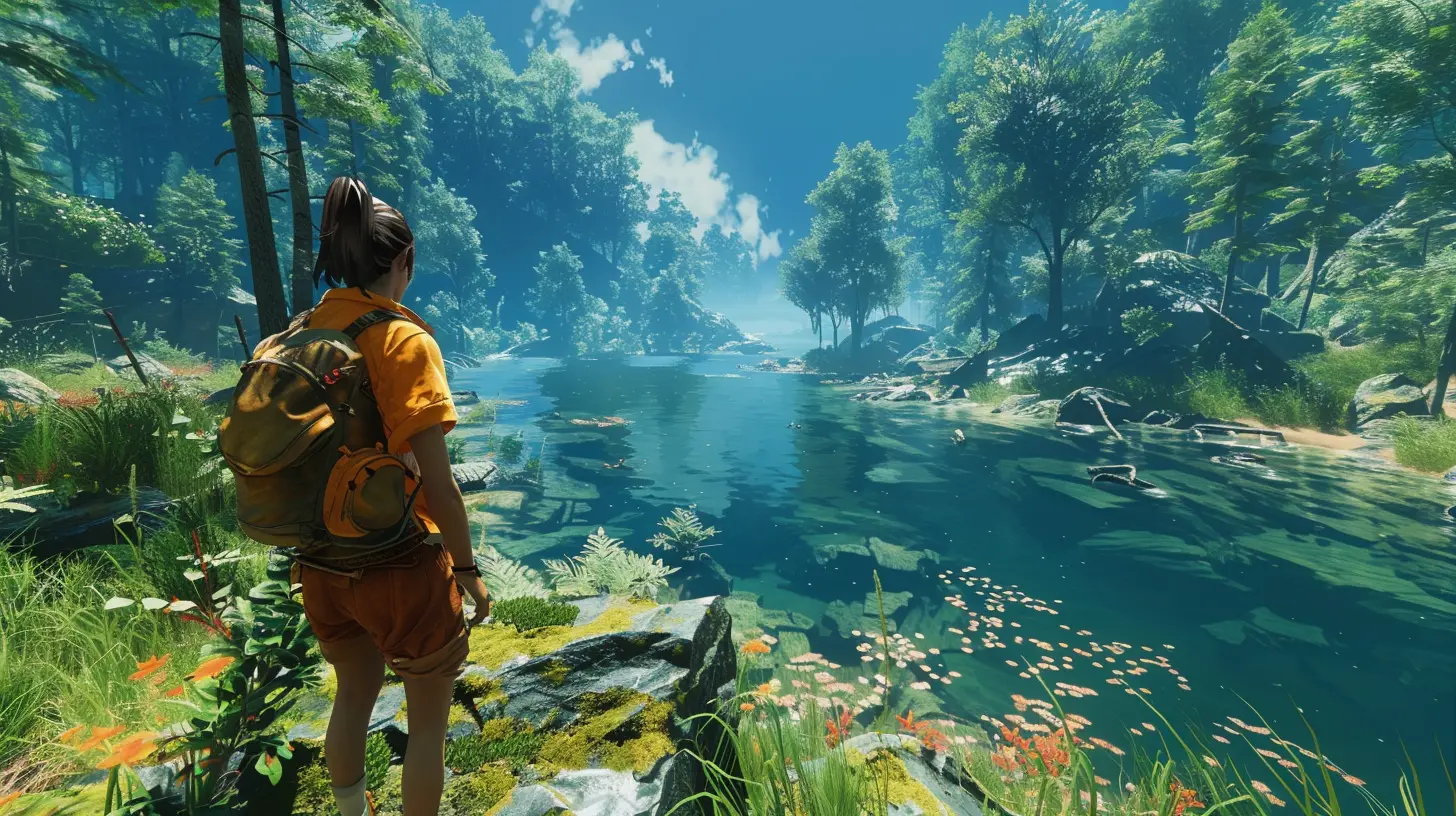Adapting to Changing Technologies in Adventure Games
2 November 2025
Adventure games have always held a special place in the hearts of gamers. From pixelated point-and-click classics to sprawling open-world masterpieces, this genre has consistently evolved alongside technology. But let’s be real—keeping up with tech isn't always smooth sailing. Sometimes, it’s like trying to solve one of those obscure in-game puzzles without a walkthrough. So, how exactly have adventure games adapted to changing technologies? And what does it mean for us, the players who’ve been along for the ride? Buckle up, because we’re diving headfirst into this fascinating topic!
From Pixels to Polygons: Graphics That Tell Stories
If you’ve been gaming for a while (or if you’ve just seen retro gameplay videos on YouTube), you understand how far graphics have come. Remember the blocky aesthetic of Monkey Island or King’s Quest? Back in the day, those pixelated visuals were cutting-edge. But as graphics technology advanced, so did the possibilities for storytelling.With 3D rendering and more powerful engines, adventure games began embracing detailed environments that weren’t just pretty to look at—they actually helped drive the narrative. Think of games like The Last of Us or Life is Strange, where every little detail tells a part of the story. The lighting, weather effects, shadows creeping across a room—it all creates an immersive atmosphere that simply wasn’t possible during the pixel-art era.
But let’s not forget where it all started. Even as developers push visual boundaries further, there’s a resurgence of interest in retro-inspired graphics. Games like Undertale remind us that great storytelling doesn’t rely solely on ultra-HD visuals. It’s the balance between technology and artistic vision that truly makes a game shine.
The Rise of Voice Acting and Better Sound Design
Let’s talk about sound for a second, shall we? Adventure games used to rely heavily on text. You’d spend hours clicking through dialogue boxes. While that was kind of charming in its own way, the introduction of high-quality voice acting changed the game—literally.Take Grim Fandango, for example. Its voice acting brought characters to life in a way that made players feel emotionally connected. Fast forward to today, and voice acting has gone from being an optional bonus to an industry standard in most narrative-driven games.
And it’s more than just voices. Advanced sound design technology amplifies immersion. With dynamic audio systems, you’ll hear the subtle creak of floorboards in a haunted mansion or the murmur of distant NPCs in a bustling city. These soundscapes make worlds feel alive.
Sound tech is smarter now, too. Adaptive audio adjusts based on player actions. Sneaking around in a stealthy moment? The music knows and gets quieter, cranking up the tension. It’s this kind of integration that makes adventure games feel less like “games” and more like interactive movies.
Virtual Reality (VR): The Next Frontier?
Okay, let’s address the elephant in the room—VR. Love it or hate it, you can’t deny its impact on gaming in general, and adventure games in particular. VR offers an entirely new way to experience stories by literally placing you inside the game world.Imagine exploring the dusty tombs of an ancient civilization with a VR headset strapped on. You’re not just controlling the character—you are the character. Games like Myst VR and The Room VR: A Dark Matter are perfect examples of how adventure games adapt to this new tech.
However, VR isn’t without its challenges. Not everyone has access to the necessary hardware, and motion sickness can be an issue for some players. But as the technology improves and becomes more affordable, we’ll likely see more epic VR adventures in the near future.
AI-Driven Narratives: When Games Think for Themselves
Here’s where things get really interesting: artificial intelligence. No, I’m not talking about super-smart NPCs taking over the world (yet). I’m talking about games that use AI to adapt the story based on your choices.A good example is Detroit: Become Human, where your decisions lead to branching storylines that can end in dozens of different ways. Thanks to AI, the game “remembers” your choices and makes you feel like you’re shaping the narrative in real-time.
But it doesn’t stop there. AI is also being used to create more realistic NPCs, ones that react like real people instead of following a scripted routine. Imagine an adventure game where every interaction feels genuine, like you’re actually shaping relationships with the characters you encounter. That’s the direction we’re headed, and it’s pretty darn exciting.
Mobile Gaming and Accessibility: Adventure on the Go
Gone are the days when you needed a beefy PC rig to enjoy a solid adventure game. Thanks to advancements in mobile technology, you can now take your adventures anywhere. From indie gems like Oxenfree to classic ports like Broken Sword, mobile platforms have made adventure games more accessible than ever.But adapting to changing tech is more than just shrinking a game onto a smaller screen. Developers also have to rethink mechanics for touch controls. Swiping and tapping on a smartphone feels fundamentally different from using a mouse and keyboard. Yet, many games have mastered this transition, proving that great design can overcome any platform challenge.
And let’s not overlook cloud gaming. Services like Xbox Cloud Gaming and GeForce NOW let you stream console-quality adventure games to your phone, effectively turning any device into a high-powered gaming machine. It’s an exciting time for portable gaming enthusiasts.
Procedural Generation: Randomness Meets Replayability
Who says adventure games have to be linear? Procedural generation—using algorithms to create game environments or story elements—has become a game-changer. While it’s more common in roguelikes and sandbox games, adventure titles are beginning to tap into this tech as well.Think of it like this: instead of replaying the same puzzles or exploring the same map, you get a slightly different experience every time. For example, The Banner Saga incorporates elements of unpredictability that keep players on their toes. Sure, every choice matters, but sometimes the unexpected curveballs are what make the journey memorable.
Procedural generation also allows smaller studios to create vast, complex worlds without breaking the bank. And let’s face it, who doesn’t love a fresh spin on their favorite genre?
Challenges and Concerns in Keeping Up
Of course, adapting to new technologies isn’t all sunshine and rainbows. There are growing pains. Some gamers feel nostalgic for simpler times and argue that focusing too much on tech takes away from what made adventure games special in the first place—the stories.There’s also the issue of accessibility. Not everyone can afford the latest hardware or has a fast internet connection. Developers need to balance innovation with inclusivity, ensuring they don’t alienate parts of their audience in pursuit of shiny new toys.
And let’s not forget the dreaded buggy launches. As games grow more complex, so does the potential for glitches. A visually stunning but broken adventure game isn’t going to win any hearts.
The Future of Adventure Games
So, where do we go from here? Honestly, the sky’s the limit. With advancements in AI, VR, and even brain-computer interfaces (yes, that’s a thing), the possibilities for storytelling are endless. Imagine a game that adapts not just to your in-game choices, but to your emotions or facial expressions. Creepy? Maybe. Cool? Definitely.What’s clear is that adventure games will continue to evolve alongside technology. As long as developers remember that storytelling is the heart of the genre, the future looks bright. Whether we’re solving puzzles in a VR headset or unraveling a mystery on our phones, one thing remains constant: the thrill of the adventure.
all images in this post were generated using AI tools
Category:
Adventure GamesAuthor:

Leif Coleman
Discussion
rate this article
1 comments
Owyn Blevins
In the shadows of pixels and code, adventure games evolve—each update whispers secrets of innovation. What lies beneath the surface of these technological shifts? As we navigate this uncharted territory, one question lingers: are we chasing the future or uncovering lost worlds?
November 4, 2025 at 4:00 AM

Leif Coleman
Indeed, the evolution of adventure games is a delicate dance between innovation and nostalgia, as we explore new frontiers while rediscovering the charm of past worlds.


